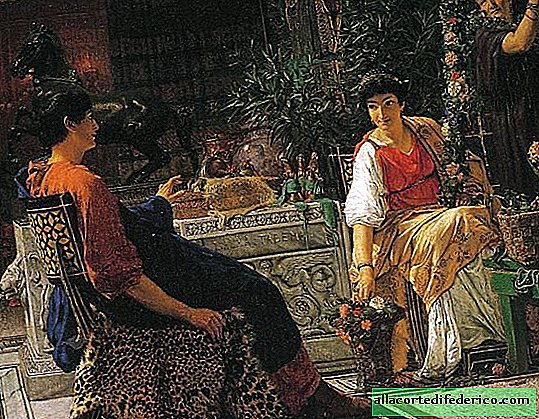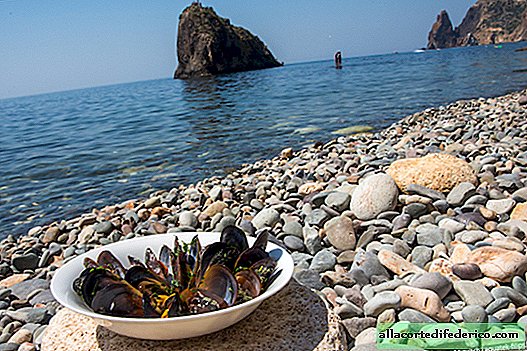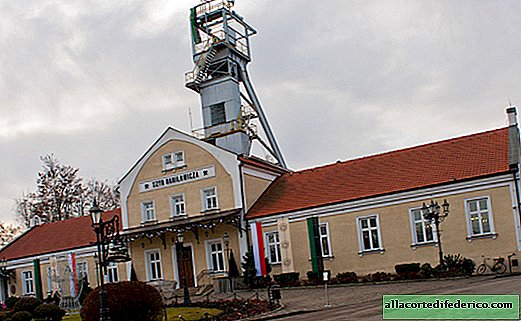Celebrations lasting six months: as celebrated in ancient Rome
People have always loved to celebrate. During the period of Ancient Rome there were so many holidays that it seemed about half a year was devoted to them.
Some of the most popular are Saturnalia and Lupercalia. Lupercalia was celebrated in the spring and was a symbol of the fertility that spring brought. It was a festival of shepherds in the glory of the god Luperk. It was celebrated three days after the February id. The servants of the god Luperk, young patricians, met in one of the caves on the Palatine Hill, where, according to legend, the she-wolf fed the twins Romulus and Remus. Young people sacrificed a young lamb. Then they necessarily wetted the blade in the blood and brought it to the foreheads of all those present. Then the patricians were to wash off the blood with wool and laugh. After that came the festive dinner. It was religious in nature. Then the skin of the animal was cut, the youths were exposed and made ritual dressings from it, thereby symbolizing God. In this form, they ran around the city and quilted everyone they met with their skins. Women participated in this rite with particular joy. It was believed that hitting the skin promotes fertility and helps with the birth of children.
Ovid wrote of Lupercalia: "Neither powerful herbs, nor prayers, nor magic spells will make you a mother, patiently submit to slaps inflicted by a fruitful hand."
 "Preparing for the holiday." Author Lawrence Alma-Tadema
"Preparing for the holiday." Author Lawrence Alma-TademaSaturnalia was a winter celebration for the glory of Saturn. It was celebrated on December 17th. During the holiday, all affairs should be postponed. Children at this time did not study, adults did not deal with any social issues, slaves were freed from their daily work and could even dine at the common table with the owners. They seemed to be temporarily equalized in rights with everyone.
The festival began with a sacrifice before Saturn at the Roman Forum. Then the festive banquet began. Senators and horsemen wore special clothes on him. A festive pig was prepared in each house. Everywhere reigned fun, laughter. Friends and relatives tried to give each other presents. On the streets, noisy crowds lit fireworks, chose the comic king and queen, lit wax candles. As a rule, festivities took place all week (seven days).
Since the 4th century AD, they have been associated with the celebration of Christmas and New Year. Many historians point out that the festive traditions largely went over to the Christian Christmas time. The halls were traditionally decorated with laurel and green branches. They symbolized the victory over darkness.
 "Harvest Festival." Author Lawrence Alma-Tadema
"Harvest Festival." Author Lawrence Alma-TademaAlmost all the holidays were dedicated to any gods of the Roman pantheon.
Since December 25, by the order of Aurelian, they began to celebrate the appearance of a new Sun. The emperor was devoted to the god of the sun and built a temple in his honor in 274 A.D.
January 9th celebrated Agonalia. A holiday dedicated to Janus, the deity of the gate and doorways. Janus was of great importance in Rome, because the most vulnerable place in every home is the doorway. Anything can penetrate through it, from enemies in human form to evil spirits. For the Romans, this feeling was so strong that they always carried the dead from the building only with their feet forward, so that the departed souls could not go back.
Under King Num Pompilia, the Romans created a temple to the god Janus. It opened during the war and closed when the soldiers returned. Until our time, he did not survive, but the image of the temple is on the money of the emperor Nero.
 Image of the Temple of Janus on the coin of Emperor Nero
Image of the Temple of Janus on the coin of Emperor NeroThe month of January (Januar) is named after this god. The first month of the year, like a gate to the new year.
In the middle of each month, as a rule, on the 15th of the day, ides were noted. They were dedicated to Jupiter. During the March celebration, people went to the riverbank, had picnics, drank a lot of wine. Merchants paid tribute to Mercury. They apologized for the deception, prayed for a brighter future and paid ten percent of their profits to the temple. During the June ides in the temple of Jupiter, they played flutes, after they put on masks, walked along the city streets with songs and wine. In July, from 304, a horse procession was organized, which went through the forum and ended at the Capitol.
During the October Eid, two-horse chariot races took place. This was an extremely dangerous entertainment during which not only horses but also people often died. Chariot races took place in ancient Greece and in Byzantium. These competitions ended with the fall of the Holy Roman Empire.
 Vestals in front of the temple
Vestals in front of the templeFebruary 21 was the Feralia holiday. The Romans turned to the gods of the underworld and the souls of departed relatives. They brought offerings to graves, wreaths, bread and wine. Above the burial place was decorated with rose petals. When one day this holiday was missed because of the war, they said that the dead roamed the streets and were very unhappy.
On March 17, the so-called Liberarii were celebrated in honor of the ancient Roman gods of fertility. The celebration was very popular in the Ancient Roman world, accompanied by great fun, sometimes reaching debauchery.
April 23 was celebrated by the Vinal. This day was dedicated to Jupiter and Venus.
Celebrating, men and women tasted last year's wine and offered it to Jupiter to provide good weather for the future wine harvest. The priest of the temple of Jupiter blessed the drink. The girls brought myrtle, mint and roses to the temple of Venus. They asked the goddess for attractiveness, charming appearance, irresistibility.
From May 9 to 13, Lemuralia passed. It was believed that in these days the souls of the dead roamed the city like vampires, and the Romans tried to get rid of them by walking barefoot and throwing black beans over their shoulders at night. The head of each family did this nine times at midnight. The rest of the household pounded on metal plates and asked the ghosts of their ancestors to leave.
From June 7 to June 15 Vestals took place in Rome. This is a celebration in honor of the goddess Vesta. Roman married women brought gifts to the temple of Vesta.
 The defeat of the Roman army by Hannibal
The defeat of the Roman army by HannibalThe Romans celebrated not only the days of victory, but also the days of defeat. One of those was a rainy day on June 21-23. On this date, in 217, Hannibal defeated the Roman army at Lake Trasimen.
July 23 was Neptunalia. The holiday was dedicated to the water god Neptune. The Romans asked him to prevent drought. In honor of him, games were played throughout the empire.

















